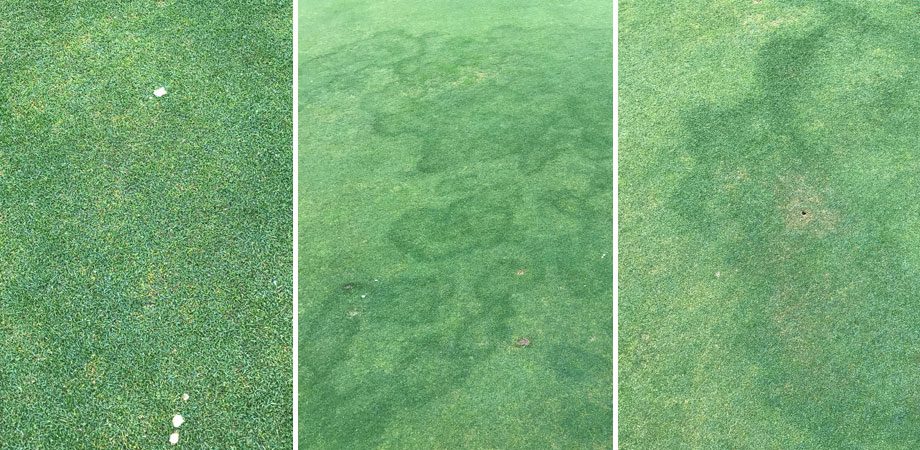Fairy ring symptoms are caused by a class of fungi called basidiomycetes, which grow in the root zone and thatch. Basidiomycete fungi don’t infect live turfgrass plants. They produce indirect turf damage when they decompose organic matter in the soil and thatch.
Three Types of Fairy Rings
As the fungi of Type I fairy ring break down organic matter, their mycelium cover soil particles. This covering leads to hydrophobic soil conditions and causes turf to die in arcs, rings or patches.

Type II fairy rings appear as dark green rings or arcs that grow more quickly than the surrounding turf. These are most apparent in turf that is deficient in nitrogen and iron.

Type III fairy rings produce mushrooms or puffballs in rings or arcs on the surface. These are typically observed after a heavy rainfall or in turf that is over-irrigated.

Preventing and controlling fairy rings on putting greens can be a bit frustrating. Good cultural practices, such as core aerating and topdressing to prevent excessive thatch, are a good starting point. Once fairy rings have appeared, a control program should be started. An application of nitrogen and iron, such as our Foliar-Pak 14-2-4 and Foliar-Pak Carbosential Fe Turbo, will mask Type II fairy ring by making the surrounding turf darker in color; however, this doesn’t solve the underlying problem.
A fairy ring control program should begin with core or needle tine aeration to the affected area. This will allow water and oxygen to move into the root zone. Several families of fungicides have shown good control of fairy ring. The DMI fungicides (ArmorTech TEB 360 XL, BASF’s Maxtima, and Nufarm’s Tourney) work well as preventative and curative applications. If you are using a PGR, you will need to consider rates of both the PGR and DMI fungicide to avoid over-regulation of your turf. The Strobilurin family (Fame, Insignia, and Pinpoint) and Prostar have proven to be effective.
A penetrant such as Hydro-Pak Command should be added to the tank to help move the fungicide into the root zone. Immediately, follow the application with 0.25” of irrigation before the spray begins to dry.
The attached photographs were all taken from the same putting green. Type II fairy ring first appeared on that green last year. All three types of fairy ring appeared this year. The superintendent needle tined the entire green, then applied ArmorTech TEB 360 XL at the 0.6 ounces per 1000 sq. ft. rate with Hydro-Pak Command at a rate of 24 ounces per acre. He followed the application with 0.25” of irrigation. The following day he applied Foliar-Pak 14-2-4 and Carbosential Fe Turbo along with his normal preventative fungicide application. Within two weeks, Type I and Type III fairy ring had disappeared, and Type II was barely noticeable.
Prevention Is Key
There are over 60 species of fungi that cause fairy ring in turfgrass. These species vary in their sensitivity to fungicides. You may have to experiment to see which fungicides work best for your particular situation. In areas with a history of fairy ring, it’s best to start a preventative program in the spring when average soil temperatures at a depth of two inches reach 55 to 60 degrees.












